Inglenook Cottage
Recently I received the following email from someone at BBC Radio WM.
“Hi Bernard,
Thank you for getting back to me.
We are at 487 Ridgacre Road West - about 5 doors down from
the main Nailer's Cottage. We are off the road, access via
a passageway down the side of 489. I think it used to be
known as 'Inglenook Cottage'. It faces in a different
direction to the rest of the road. We have the old village
water pump in the garden and we are next door to what I
think was the coaching house - which is the white cottage
485.
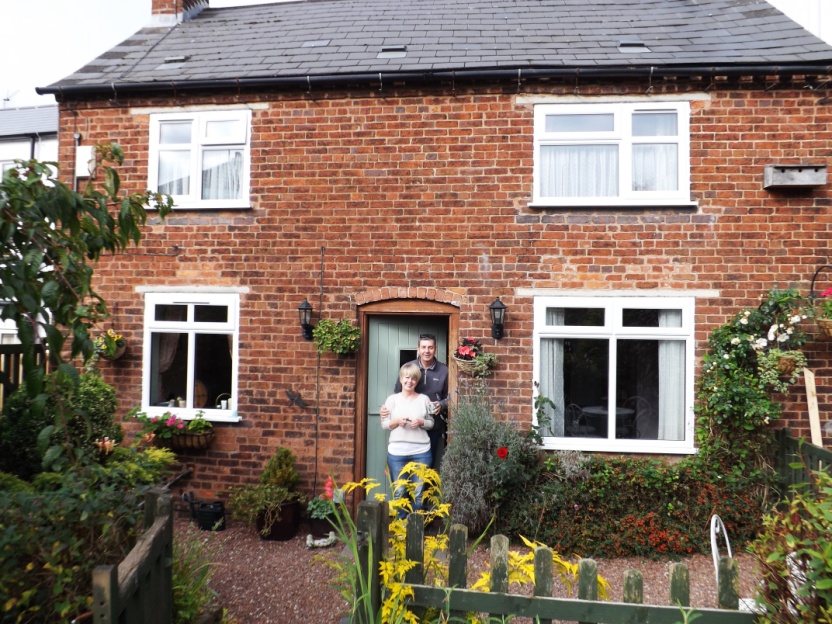
Andrea and Brian Coles outside the cottage
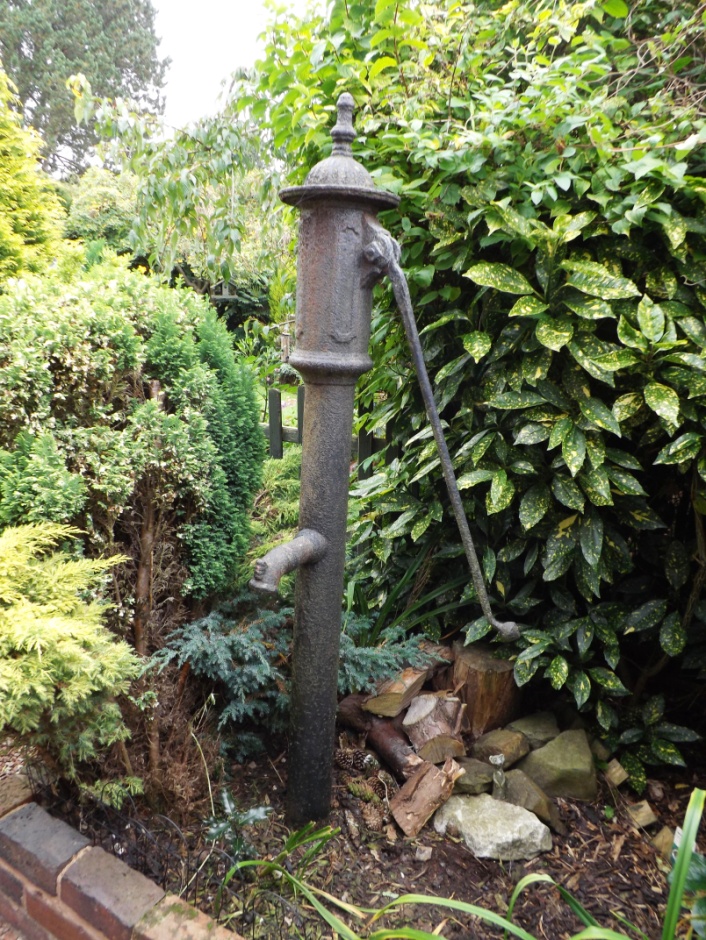
The village water pump in the garden
We often find old and sometime rather large nails (see photo below) in the garden, seemingly handmade! I believe an old outhouse/furnace was once at the back where nails were made.
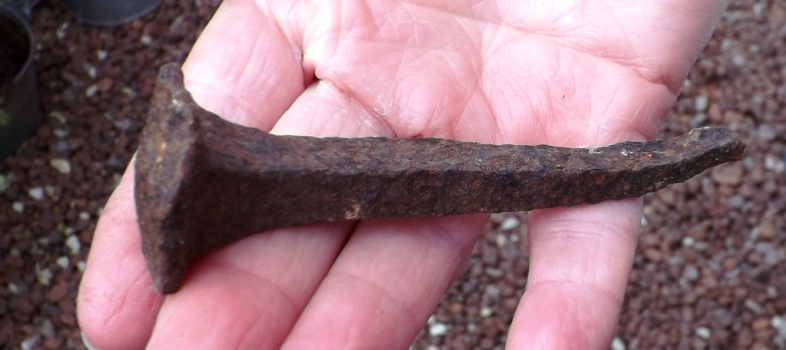
One corner of the cottage has large stone boulders as foundation - old pig shed we think! We think it certainly dates back into late 1700s - handmade bricks and old oak beams etc. It backs onto the old burial ground. That's about all I know but you would be most welcome to come and have look. Kind regards, Andrea Coles.”
Then out of the blue a member of the QLHS telephoned me to thank me for her society birthday card. Vivien’s family used to live in the cottage and she reminded me of an article in the Millennium Edition of the Oracle.
Sadly the article doesn’t appear on the website and because it was in the original A4 format I would imagine most of the current membership would not have seen it or indeed remember it.
So here is the article reproduced from the year 2000 –
“My grandfather, Albert Edward Willets and his wife, Lizzie moved into 487 Ridgacre Lane (Later named Inglenook Cottage) when they were married around 1890. They had eight children, two of whom died when they were babies.
Albert was a builder’s labourer and Lizzie took in washing to make ends meet. The eldest daughter, Elsie, went into service in Torquay on leaving school and sent home money to help the growing family.
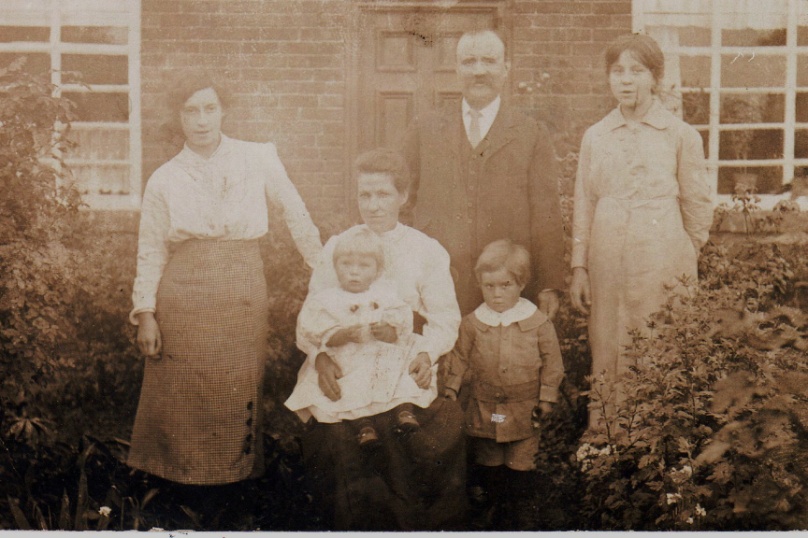
Albert Edward Willetts, Lizzie and four of the children
Robert the eldest son was killed in the First World War aged 21. His name is in Christ Church, Quinton on a plaque of remembrance for all those local boys who were killed in the 1914-18 war.
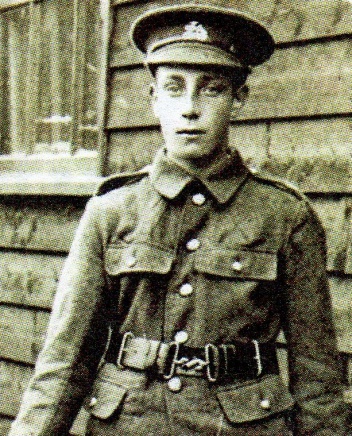
Robert Edward Willetts
My father William Ernest (Ernie) was born in 1912. The second youngest, he did very well at school and could have gone to grammar school. Unfortunately, grandfather died when William was 10years old so he had to leave school at an early age and go out and support the family.
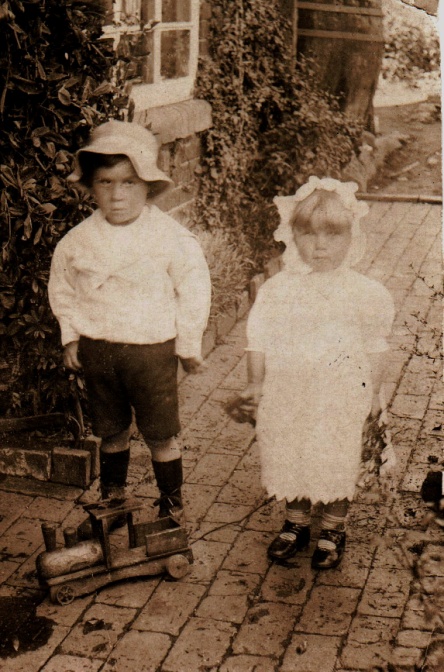
William and Margaret
There was a lot to do in the cottage my father and his youngest sister Margaret returned from school at lunchtimes to help with the washing, scrub the floors and clean the black lead cooking range. They kept chickens in the garden and grew all the fruit and vegetables they ate. The ancient pump in the garden was used for all the water.
Margaret Willetts was a champion sprinter for the school team. She was 14 years old when she competed in the All-Birmingham School Sports Day at Queens Park, Harborne. She would have joined Birchfield Harriers but funds prevented this happening until she was eighteen.
In the Second World War a bomb went off close by in Watery Lane and grandmother as thrown across the room of the cottage, no damage done apparently but she died a few months later.
Auntie Winnie Willetts, born in around 1901/2 was the last resident of the cottage. When she died in 1988, aged 87, the cottage was returned (sadly for our family) to the owners and put up for sale. It has been renovated and does look a lot different from how I remember it as a child.
Margaret is the only member of the Willetts family from the cottage alive today and she lives in Deganwy, North Wales.”
Following from this telephone call from Vivien I was tidying a few files in my loft and found a hand-written letter received from Margaret Bate. I had evidently written to her previously with a few questions about the cottage, the area around and buildings. Here is a transcript of her letter:-
“Dear Mr Taylor,
Thank you for your kind letter and I am not surprised you were confused. The land you ask about and what it was called was all gardens which backed onto the park, Meadow Road. Ten ground and cottage belonged to the pub, New Inn owned by Mitchells & Butler.
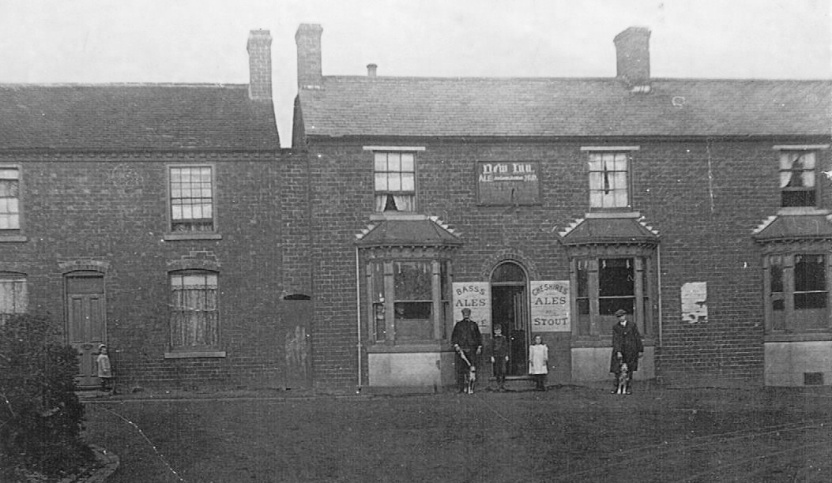
New Inn public house in the early 1900s
I can’t remember but I think the rent was paid to them, then when the pub was closed, Mr Sprayson bought the house and cottage and my sisters paid the rent to him. When he died and his wife died later, but his wife said that Mr Sprayson had put in his will that my sister be allowed to stay in the cottage until her death and then Mrs Sprayson sold the cottage. Sometime after we were visiting my brother and he asked if we would like to be nosey and see what had been happening at the cottage. Two men had bought the cottage and altered the garden quite a lot, we told them who we were, they were delighted and took us into the cottage, then asked a lot of questions.
Such as why were there hooks hanging from the ceiling. We told them that we would hang the sides of bacon from there, given to us as a gift by Mr Yates in High Street who used to keep pigs.
There was a field at the side of the garden, at the back of the New Inn public house, and backed onto the Old Burial Ground. This field belonged to a farmer, I don’t know his name, but us children had a great time making hay houses and have hay fights. Mom would give us a bottle of water and sandwiches, we would stay there for hours. It was a sad day when the farmer came to collect his hay but we had a ride on his wagon; you could rely on the sun shining then.
The bowling green for the New Inn was definitely opposite the pub. I have had a closer look at an ordnance survey map, sent to me by Vivian, but I don’t agree with it at all. Meadow Road is in the wrong place altogether.
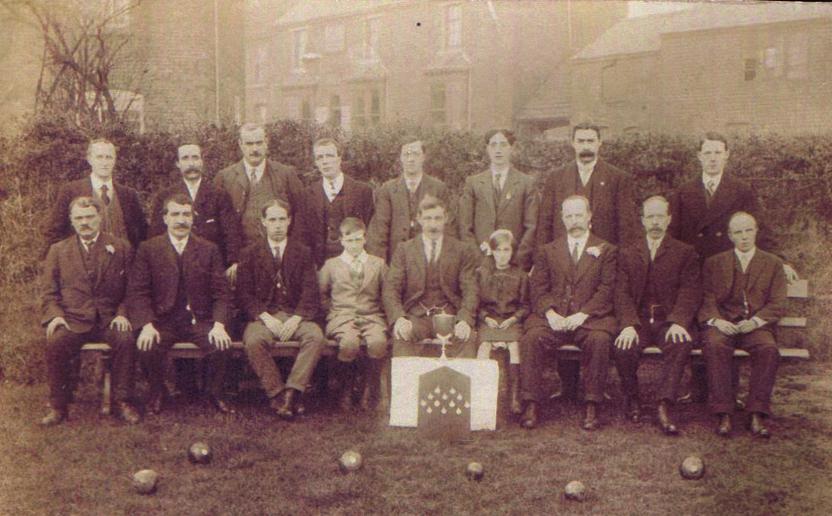
New Inn bowling team taken on the green with their trophy
The New Inn Pub can be seen directly behind the chap in the middle (located on the opposite side of the road)
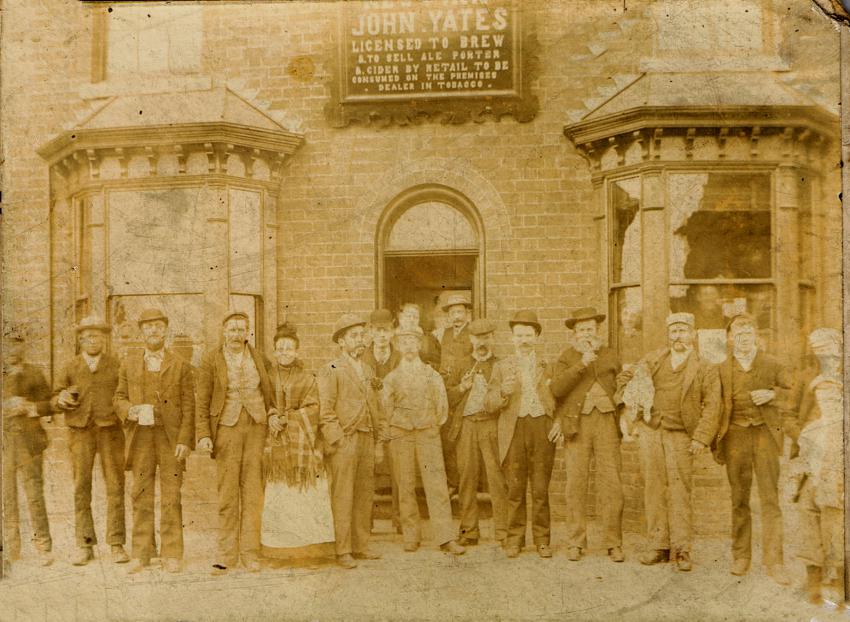
New Inn taken in the early 1900s with John Yates as Licencee
I was very interested in the reminiscences of Gladys Jones, the last paragraph about the land mine dropped in the Men’s’ Home grounds. We had a shelter in the garden and when the sirens went, I gathered my mother carried her to this Anderson shelter, we had three bunks complete with candles and we always had something to eat in there. My husband made a little chimney through the top so we could get air, we would sleep all night and knew nothing of the “all clear” until the warden came next morning and apologised because he didn’t know of the cottage until the neighbours told him. I too remember Coventry was burning. There was another land mine down Watery Lane, which was left and it exploded about a week later.
I came home from work in the centre of Birmingham to find my mother horribly shaken when this bomb went off. She liked a rest in the afternoon on the sofa and she found herself the other side of the room, the shock caused her death a few months later.
The blast was that ferocious the windows in the New Inn were blown out. The pub was used as a storage area for gas masks etc. I have done a sketch but apologise that it isn’t very good.
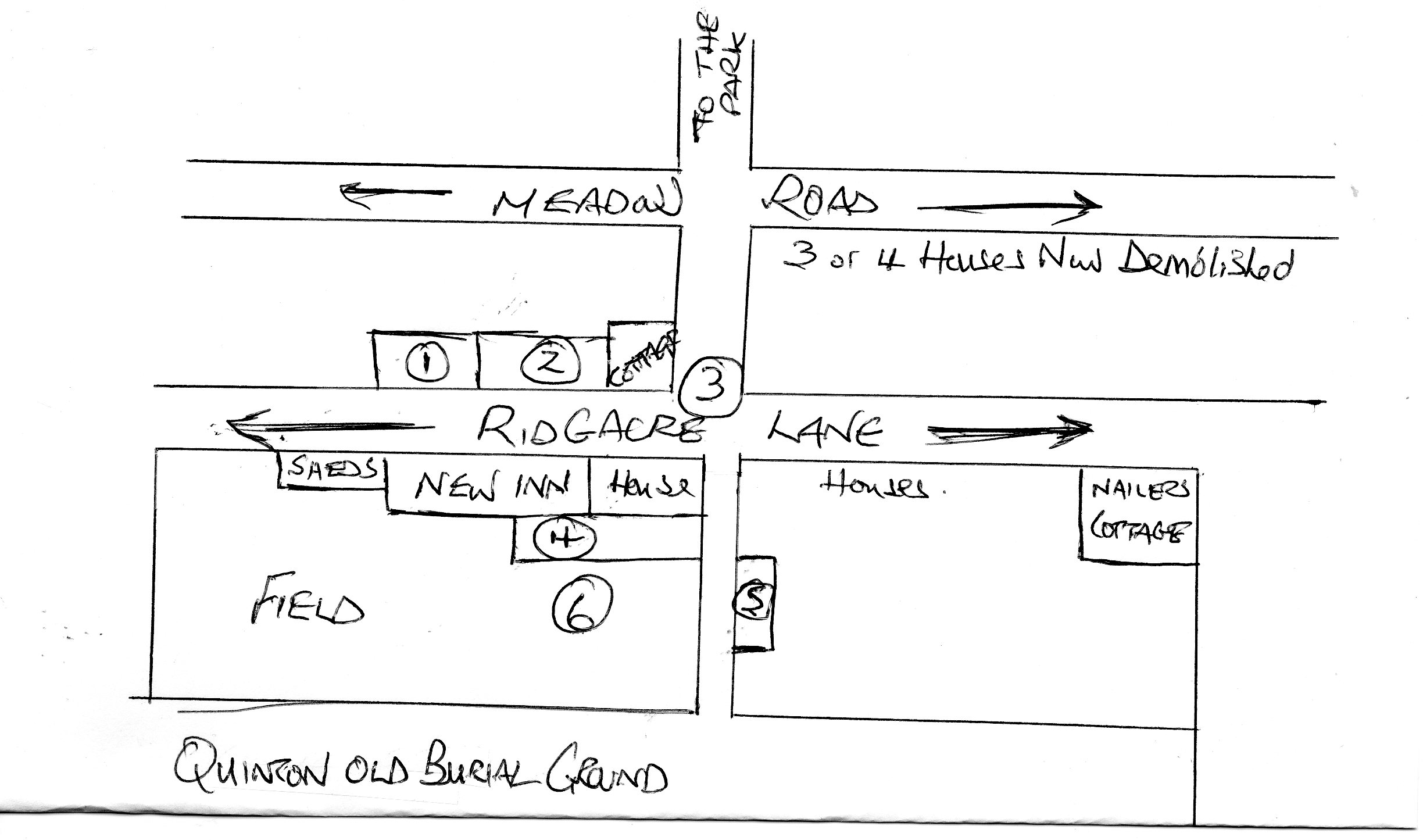
-
New Inn bowling green
-
My Uncle’s cottage
-
The Green
-
Small garden at rear of New Inn
-
My “Inglenook Cottage”
-
My cottage garden that backed on cemetery
The current owners are trying to date the cottage from their deeds.
Ed’s comment - If you are intrigued, and didn’t know of its whereabouts, and you would like to take a look please give consideration to the owner’s privacy. Many thanks to all who contributed to this article.
Click here to go back to the Oracle page.